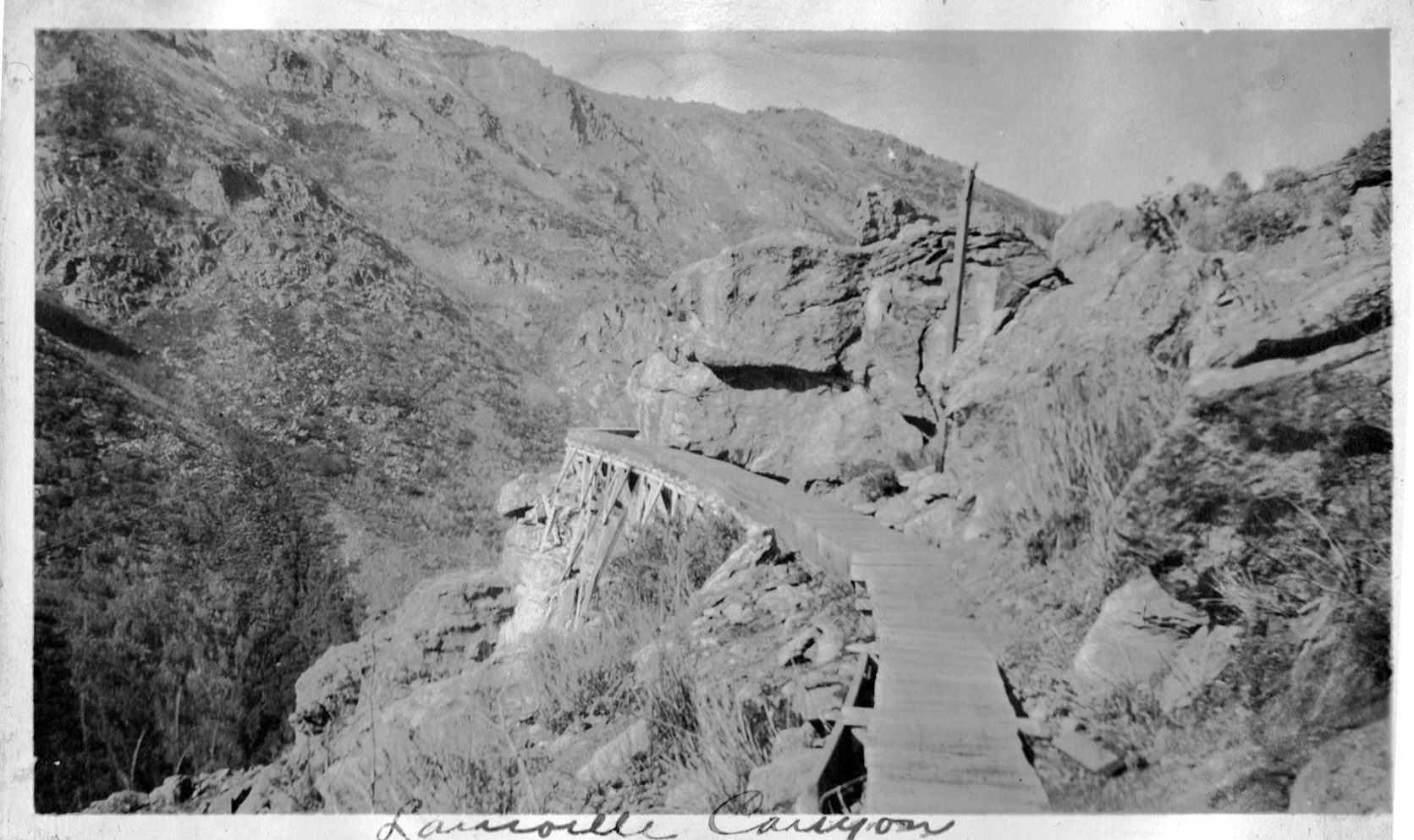Time travel tales
by Jan Petersen
Elko’s Hillside Letter
1868
On December 28, 1868, the Central Pacific Railroad, building eastward on the transcontinental railroad endeavor, reached a designated townsite which Charles Crocker named Elko (for the antlered animals he’d seen, with an O for emphasis). By the first week in January, 1869, a townsite map with streets and lots was drawn up. The town quickly became a ranching and mining center. Homes were built, businesses were established, a school and Presbyterian church opened. Elko thrived… and grew.
1896
Elko County High School was established through legislation on March 6, 1896. The school was the first publicly funded by taxpayer dollars in Nevada. A two-story brick building was built behind the courthouse on Court Street at 569 Court Street (now the Public Defender’s Office). Clubs formed, sports teams evolved and, of course, academics were of the highest standard. A year book, Pohob and team mascot, an Indian, honoring the local natives, was established.
1914
In the fall of 1914, Raymond Thomas, a young college graduate from Oregon, was hired to teach Science and Manual Arts (now called Woodshop). He also was the girls’ basketball coach and active in other school activities. His Manual Arts program was so successful that it was moved to the basement of the courthouse in 1915 so the lower level of the high school building could be used for basketball practice instead of practicing outdoors.
1916
The 1916 school year started in September with seven teachers, including 25 year old Raymond Thomas, and 110 students at Elko County High School. He had learned of communities throughout the West placing hillside letters near universities and high schools and thought Elko needed one. Professor Thomas talked the Block E Society athletes into building an E on a hill southeast of Elko towards  Lamoille and the Ruby Mountains. Juniper trees and sagebrush were cleared from the ground and a giant E was staked out, 300 feet high and 60 feet wide.
Lamoille and the Ruby Mountains. Juniper trees and sagebrush were cleared from the ground and a giant E was staked out, 300 feet high and 60 feet wide.
Fun Fact
Elko Lamoille Power Company was created in 1913 by installing a small dam in Lamoille Canyon (above the present Camp Lamoille) with a long, wooden flume that ran the water down the valley to a generating power plant at the base of the canyon. (In 2024, this is the Power House picnic area.)
1916
A popular activity for Elko County High School students beginning in 1913, was to “hike the flume.” In October, 1916, Thomas and students from the high school hiked along the flume in Lamoille Canyon. Many photos were taken documenting these treks. (My grandma, her sister, my mother-in-law and others often told stories of these adventures in later years.) However, weather in October can be unpredictable and a nasty snow storm came up. Thomas got the students safely down the hill but tragically, he collapsed and died. After the storm cleared, a snowy white E was visible on the hillside. The entire school and town were quite traumatized and plans for the hillside E faded away.
BUT…in the Fall of 1917, they regrouped. As a memorial to Professor Thomas, the Block E boys finished the E on the hillside – 300 feet high and 60 feet wide, and painted it white. In addition, it was arranged with the U.S. Forest Service to name the canyon above the flume and dam, in his honor… Thomas Canyon. Since 1917, both the hillside E and the name, Thomas Canyon, remain memorials and landmarks in our community. AND….now, you know the rest of the story!
Photos courtesy of Northeastern
Nevada Museum and ECHS Pohob